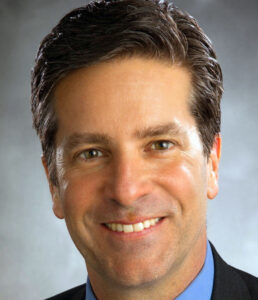
Indiana’s SB 400, signed into law on May 4, 2023, requires hospitals with emergency departments (EDs) to have a physician on site, on duty, and responsible for the ED at all times.1 In April 2024, Virginia enacted a similar law (HB 353/SB 392)—with implementation set for July 1, 2025—replacing an established requirement that allowed a physician to be available to the ED on call with a new mandate requiring the physician’s presence in person.2
Explore This Issue
ACEP Now: Vol 44 – No 01 – January 2025To many emergency physicians, mandating that all EDs be staffed around the clock by a doctor may seem like a minimum threshold for ensuring the quality and safety of emergency care nationwide, but some hospitals, particularly struggling rural facilities, argue that this standard will be difficult to meet.
Today, some EDs are staffed for part or all of the day by physician assistants (PAs) and nurse practitioners (NPs), and rural EDs are more likely to employ these clinicians practicing independently, without onsite physician supervision or involvement.3 Because ACEP believes that it is crucial for a physician with training and/or experience in emergency medicine to provide or oversee the care in EDs, it supported the Indiana and Virginia chapters’ legislative efforts as a model for other states and a priority for legislative outreach.4 ACEP also offers a toolkit for how to pass physician mandates in individual states.
ACEP’s Council voted in September 2024 to collaborate with the American Medical Association (AMA) in advocating for this issue. According to an AMA Newswire release on Nov. 12, AMA concurred that “having a physician on site is the best way to deliver care,” although an AMA Board of Trustees report concluded that some rural and remote facilities may not be able to meet this aspiration.5
Other state chapters are interested in pursuing similar mandate laws, according to Todd Parker, MD, FACEP, an emergency physician in Virginia Beach, Va., and immediate past president of the Virginia Chapter of ACEP.
“In Virginia, we were ready to go public with a campaign making this a patient safety issue, but in the end that wasn’t necessary,” Dr. Parker said. Currently, there is no hospital in Virginia that doesn’t have a doctor onsite 24/7, he added.
EDs need emergency physicians, first and foremost, because of their training, Dr. Parker said. Emergency physicians get many more hours of supervised clinical training than PAs or NPs, he said. According to a 2020 review of interprofessional variation in education, a board-certified emergency physician has completed at least 5,000 average program clinical contact hours, among other training requirements, compared with 2,000 hours for a PA and 500 for an NP.6
Pages: 1 2 3 4 5 | Single Page






2 Responses to “ACEP Takes Firm Stand on Physician Leadership”
January 7, 2025
Nate MinnickThere’s a catch for rural rotations for residents. The ACGME requires for EM:
“Faculty members supervising emergency medicine residents in an adult emergency department must either be ABEM/AOBEM board eligible or have current ABEM and/or AOBEM certification in emergency medicine.”
In the strictest sense, this limits programs from sending residents to sites that could possibly have FM physicians, since it would make scheduling more complicated.
Perhaps the ACEP Rural section can work with CORD to discuss with the ACGME. FM residents could to a rural rotation and work with EM or FM physicians.
January 12, 2025
Michael MenowskyI think this is a great first step for states and ACEP. I know Inwill catching a lot of backlash, but I believe Emergency Departments should be staffed by those trained to work there.
A 2 month of EM rotation during 3 yrs residency, I don’t think provides the knowledge or skills to provide quality, efficient and comprehensive Emergency Care. During residency I was required to do 3 months of Trauma Service, that does not make me a Trauma Surgeon.
With discussions of workforce shortages in EM and that being a factor in recent MATCH numbers, rural EM provides the opportunity for residents post graduation to expand into those areas.
I will leave you with this tale, I received a trauma patient that arrived as a transfer after a motor vehicle collision. The physicians I received the call from, told me he was a “family doctor” and did not know how to do a chest tube. He spotted the large pneumothorax on chest XRay. He stated he just wanted to get them out of the ED and asked if I would accept? Of course I did, the patient arrive in cardiac arrest, as soon as I did a thoracostomy, and 2 more rounds of CPR our team was able to resuscitate the patient. Trauma surgeon arrived and patient went to the OR for other injuries. My question, shouldn’t anyone working in an ED be capable of performing a chest tube, the ACGME requires that and many other to complete an EM residency?